How to Use the Nine Basic Types of Climbing Handholds
Nine Basic Types of Climbing Handholds
Written by Stewart Green
To link to the original article and many more informative articles, please visit LiveAbout.com
Every rock face that you climb offers a variety of handholds or grips. Handholds are usually used for pulling yourself up to the rock rather than pushing which is what you do with your legs. Although, you do push yourself upward if you use a palming move. The use of handholds is somewhat intuitive. Your hands and arms usually know what to do when you grab a handhold to stay in balance and to pull.
Learn and Practice Using Different Handholds
While handholds are key to rock climbing movement, how you use those handholds ranks below your footwork and body position for successful climbing. It would still help if you learned how to grip various kinds of handholds you will encounter in the vertical world. Most indoor climbing gyms set routes with a wide variety of humanmade handholds, which allow you to learn and practice the different grips. Practice using every type of handhold to gain the best hand techniques and build hand and forearm strength.
3 Basic Ways to Use Handholds
When you encounter and then choose a handhold to use on a cliff, you have to decide how you will use that hold. There are three basic ways to grab handholds: pull down, pull sideways, and pull up. Most handholds that you use require pulling down. You grab an edge and pull down like you are climbing a ladder. For the other holds, you will learn how to use them through practice.
1. Edges
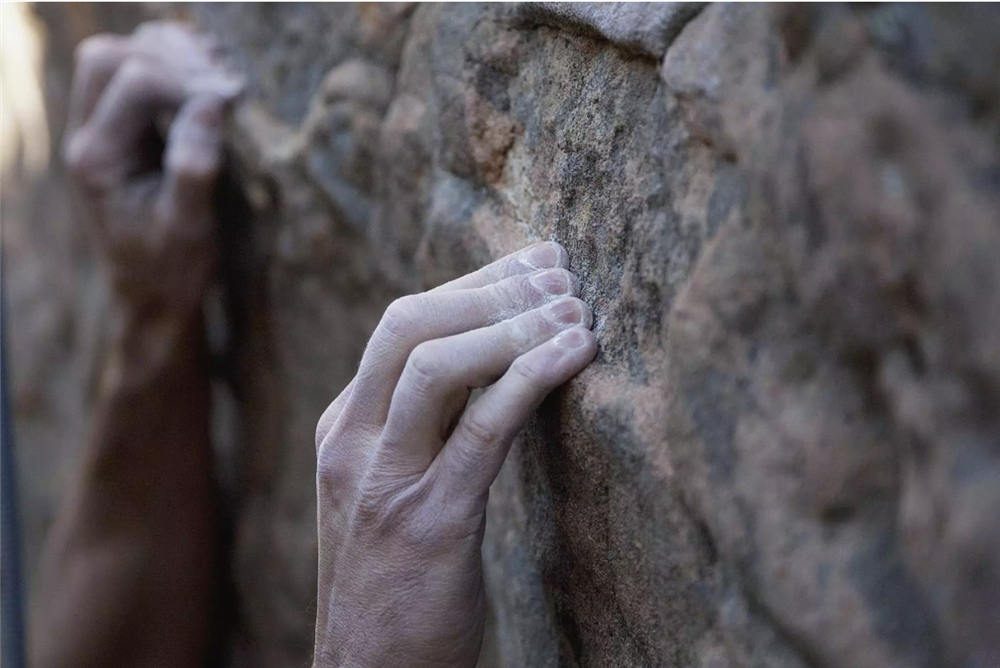
Brent Winebrenner/Lonely Planet Images/Getty Images
Edges are the most common type of handholds that you encounter on rock surfaces. An edge is usually a horizontal hold with a somewhat positive outside edge, although it can also be rounded. Edges are often flat but sometimes have a lip so that you can also pull out on them. Edges can be as thin as a quarter or as wide as your whole hand. A big edge is sometimes called a bucket or a jug. Most edges are between a 1/8-inch and 1½ inches in width.
There are two basic ways to use your hands on an edge—crimp grip and open hand grip. Crimping is grabbing the edge with your fingertips flat on it and your fingers arched above the tips. This hand position is usually solid, but there is the danger of possible damage to your finger tendons if you crimp too hard. While not a power hand move like the crimp, the open hand grip works best on sloping edges where you get lots of skin-to-rock friction. The open grip is often used on sloping holds. Use chalk on your fingers to increase friction, and practice open hand grips to get stronger.
2. Slopers
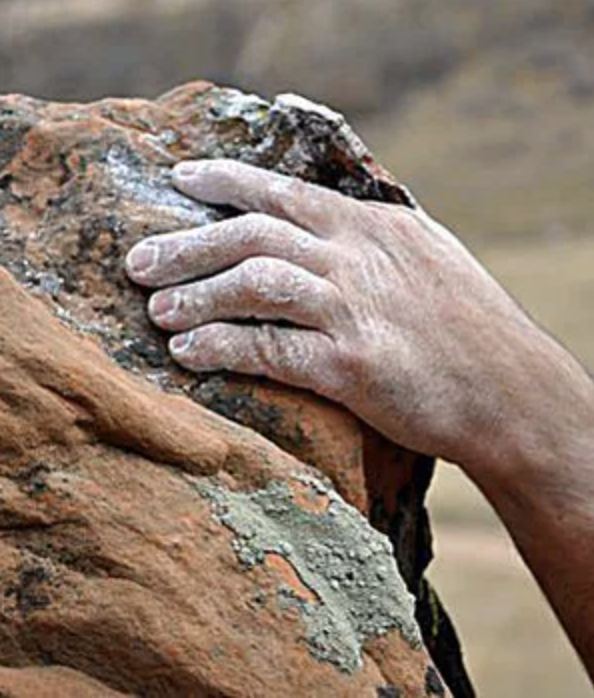
Photograph © Stewart M. Green
Slopers are simply that—sloping handholds. Slopers are handholds that are usually rounded and without a positive edge or lip for your fingers to grip. You will often encounter slopers on slab climbs. Slopers are used with an open hand grip, requiring your skin's friction against the rock surface. It takes practice to use sloper handholds effectively. Slopers are easiest to use if they are above you rather than to the side so that you can keep your arms straight for maximum leverage when gripping them. Slopers are easiest to use in cool, dry conditions, rather than in hot, sweaty weather when you can grease off them. Remember to chalk up!
If you’re climbing and encounter a sloper, feel around with your fingers to find the best part of the hold. Sometimes you will find a slight ridge or bump that allows a better grip. Now wrap your hand onto the hold with your fingers close together. Feel around with your thumb to see if there is a bump that you can press it against.
3. Pinches
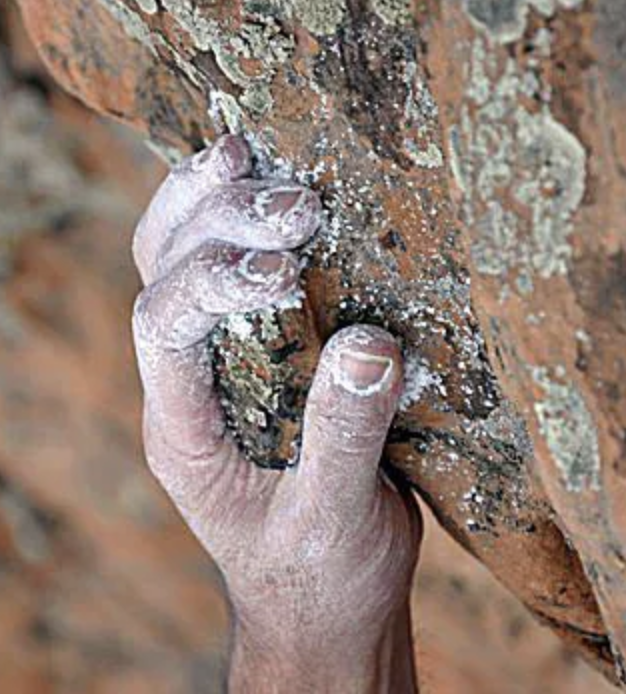
Photograph © Stewart M. Green
A pinch is a handhold gripped by pinching it with your fingers on one side and your thumb opposed on the other. Pinches are usually edges that protrude from the rock surface like a book. Sometimes pinches are small knobs and crystals or two side-by-side pockets. This is gripped as you would the finger holes in a bowling ball. Pinches are often small, requiring your fingers and thumb to be close together. These small pinches are usually strenuous. Pinch these small holds with your thumb instead of your index finger or your index and middle fingers, (which when stacked on each other) are much stronger than just the index finger. Wide pinches that are the width of your hand are usually the easiest to grip and hold onto. On these big pinches, oppose your thumb with all your fingers.
4. Pockets
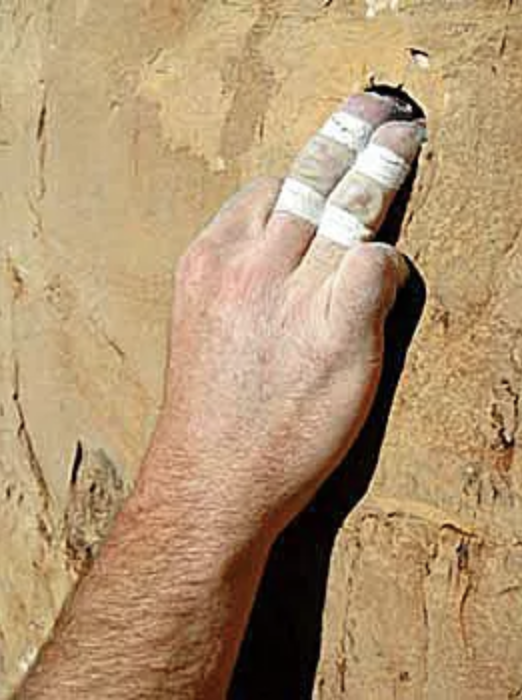
Photograph © Stewart M. Green
Pockets are literally various-sized holes in the rock surface, which a climber uses as a handhold by putting anywhere from one finger to all four fingers inside the hole. Pockets come in all shapes from ovals to oblongs and in various depths. Shallow pockets are more difficult to use than deep pockets. Pockets are commonly found on limestone cliffs like Ceuse in France and Shelf Road in Colorado.
You will usually insert as many fingers as you can comfortably fit into a pocket. Feel inside the pocket’s floor with your fingertips to find dimples and lips that your fingers can pull against. Some pockets, especially ones with a sloped floor, are also utilized as side pulls, with the fingers pulling against the side of the pocket rather than the bottom.
The best pockets to use are either three-finger pockets or two-finger pockets. The hardest and most strenuous pockets are one-finger or monodoigt pockets. Be careful using one-finger pockets since you can severely stress and injure your finger tendons if you pull your whole weight on the hold. Whenever you use one or two-finger pockets, always use your strongest fingers. The middle finger is strongest for monodoigts and the middle and ring fingers for two-finger pockets.
5. Sidepulls
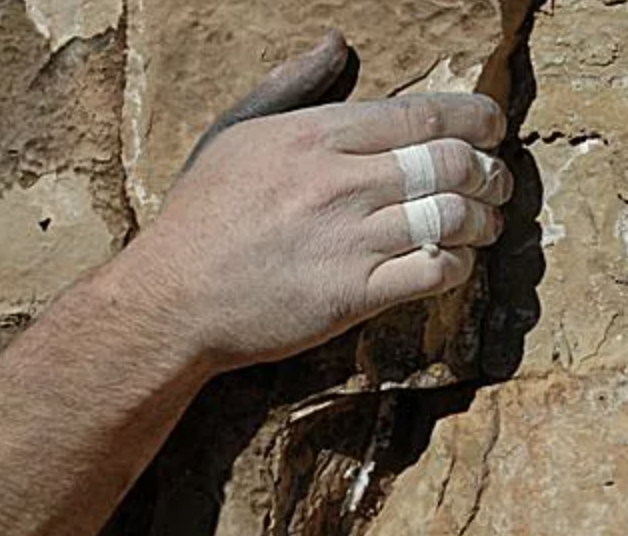
Photograph © Stewart M. Green
A side-pull handhold is usually an edge that is vertically or diagonally oriented and is located to your side rather than above you when you’re climbing. Sidepulls are holds that you pull sideways on instead of straight down. Sidepulls, sometimes called layaways, work because you oppose the pulling force that your hand and arm exert on the hold with your feet or opposite hand.
You will usually pull outward on the side-pull hold while pushing a foot in the opposite direction with the opposing forces keeping you in place. For example, if the sidepull is to your left, then lean right to maximize the opposition with your body’s weight. Use a side-pull with your fingers and palm facing toward the hold and your thumb facing upward. Sidepulls also work great by turning your hip toward the wall while standing on the outside edge of your climbing shoe. This position often allows you to make a high reach with your free hand.
6. Gastons
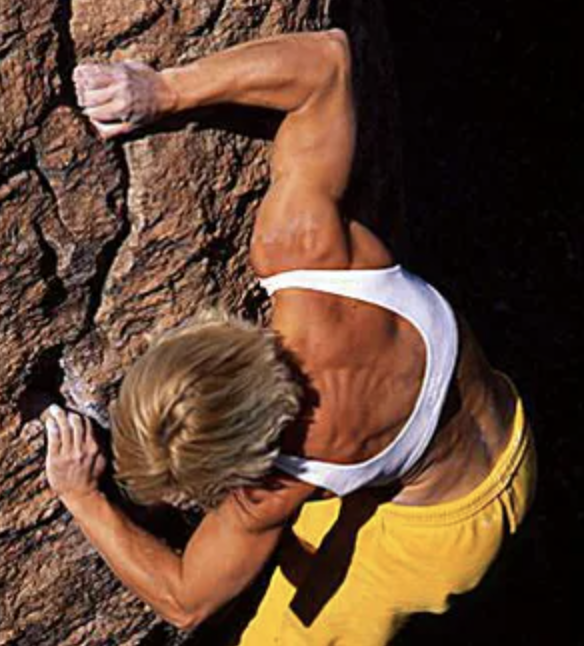
Photograph © Stewart M. Green
A Gaston (pronounced gas-tone) was named for the stylish French climber Gaston Rebuffat. This handhold is similar to a sidepull. Like a sidepull, a Gaston is a hold that is oriented either vertically or diagonally and is usually in front of your torso or face. To use a Gaston, grab the hold with your fingers and palm facing into the rock and your thumb pointing downward. Bend your elbow at a sharp angle and point it away from your body. Now crimp your fingers on the edge and pull outward like you’re trying to open a sliding door. Again, like a sidepull, a Gaston requires opposition with your feet to make it work best. Gastons can be strenuous but it’s worth practicing the move because you will find it on many routes.
7. Undercling
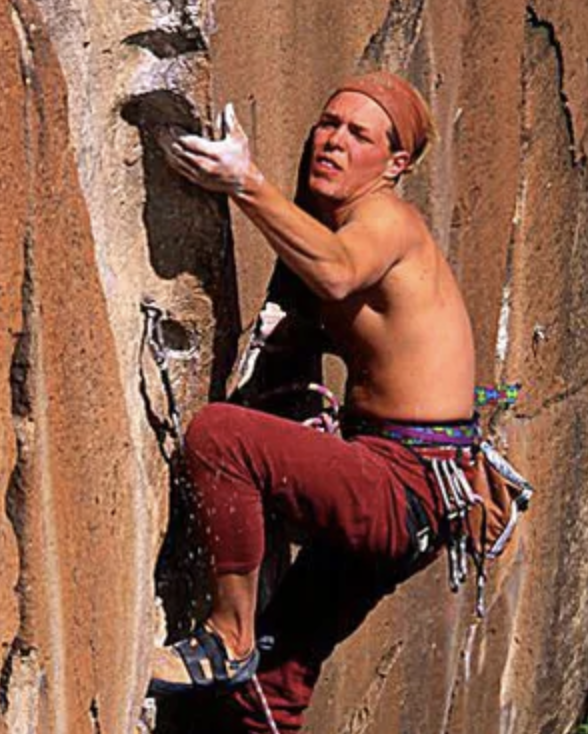
Photograph © Stewart M. Green
An undercling is exactly that—a hold that is gripped on its underside with your fingers clinging to the outside edge of it. Underclings come in all shapes and sizes, including diagonal and horizontal cracks, inverted edges, pockets, and flakes. Underclings, like side-pulls and Gastons, require body tension and opposition to work best.
To make an undercling move, grip the upside-down hold with your palm facing up and your thumb pointing outward. Now move up on the hold by pulling out on the undercling and pasting your feet against the wall below in opposition. Sometimes you can make an undercling move with only your thumb beneath the hold and your fingers pinching above. Underclings work best if the hold is near your mid-section. The higher the undercling move, the more off-balance you will feel until you move up on the hold. Underclings can be strenuous, so use straight arms whenever possible to lessen muscle fatigue in your arms.
8. Palming
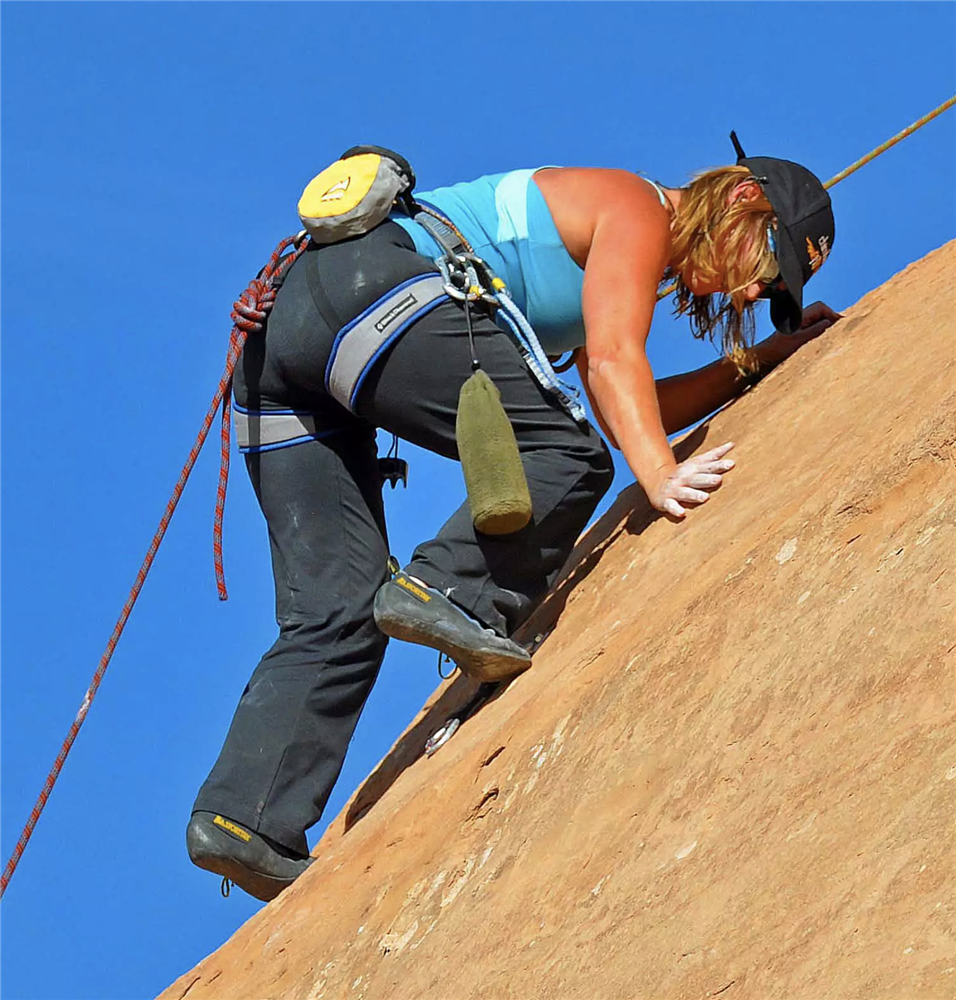
Photograph © Stewart M. Green
If no handhold exists, then you have to palm the rock surface with an open hand, relying on hand-to-rock friction and pushing into the rock with the heel of your palm to keep your hand in place. Palming works great on slab climbs where no clearly defined handholds exist, and they also help save lots of arm strength because you push with your palm rather than pull with your hand and arm.
To use a palming handhold, find a dimple in the rock surface and turn your hand, so your palm faces toward the rock. Next, press down on the rock with the heel of your hand below your wrist. Palming allows you to move a foot up to another foothold while your body weight is concentrated on the palm. Sometimes you can also use a palm on the vertical walls of a corner or dihedral, pressing your palms against the walls and opposing your arms and legs on either side of the sidewalls.
9. Matching Holds
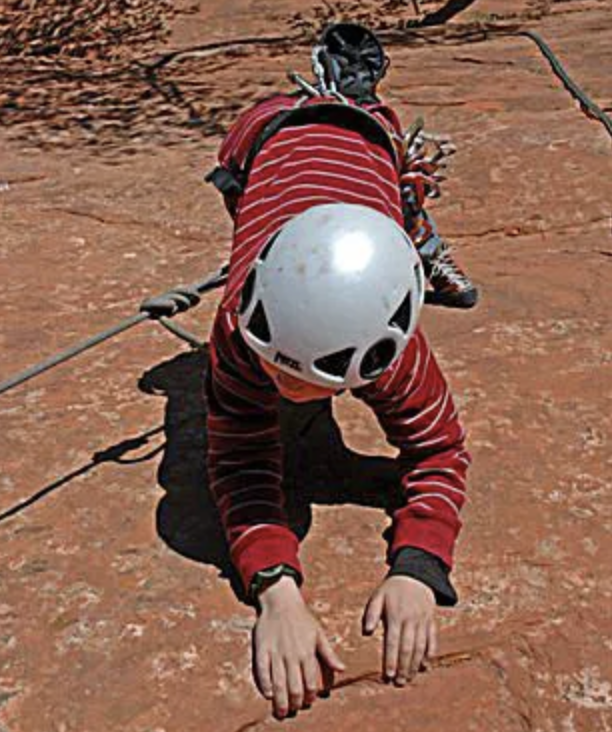
Photograph © Stewart M. Green
Matching is when you match your hands on a large handhold, often a wide edge or rail of rock, next to each other. Matching allows you to change hands on a particular hold so that you can reach up to the next one more easily. It’s easy to match hands and fingers on big holds since they will be side by side.
It’s more difficult to match on small edges. If it looks like you have to match on a small hold, keep your first hand to the side of the hold with maybe only a couple of fingers on it. Then bring your other hand up and grip the hold again with only a couple of fingers. Shuffle the first hand off so that you can grip the hold better with the second hand before reaching for the next hold above. In some instances on hard routes, you may have to match by lifting one finger at a time off the hold and then replacing it with your other finger.


